-
 Bitcoin
Bitcoin $118100
-0.44% -
 Ethereum
Ethereum $3585
5.43% -
 XRP
XRP $3.434
5.65% -
 Tether USDt
Tether USDt $1.000
0.02% -
 BNB
BNB $743.8
3.89% -
 Solana
Solana $178.7
3.84% -
 USDC
USDC $1.000
0.03% -
 Dogecoin
Dogecoin $0.2381
12.81% -
 TRON
TRON $0.3270
3.62% -
 Cardano
Cardano $0.8315
4.93% -
 Hyperliquid
Hyperliquid $44.51
-4.42% -
 Stellar
Stellar $0.4710
1.52% -
 Sui
Sui $3.896
-2.51% -
 Chainlink
Chainlink $18.09
6.98% -
 Hedera
Hedera $0.2681
9.31% -
 Bitcoin Cash
Bitcoin Cash $516.7
4.83% -
 Avalanche
Avalanche $23.95
6.96% -
 Shiba Inu
Shiba Inu $0.00001490
5.67% -
 UNUS SED LEO
UNUS SED LEO $8.966
0.80% -
 Toncoin
Toncoin $3.294
4.39% -
 Litecoin
Litecoin $105.4
4.69% -
 Polkadot
Polkadot $4.356
5.30% -
 Uniswap
Uniswap $10.29
17.25% -
 Monero
Monero $327.9
-3.04% -
 Bitget Token
Bitget Token $4.942
4.33% -
 Ethena USDe
Ethena USDe $1.001
0.08% -
 Pepe
Pepe $0.00001348
2.17% -
 Dai
Dai $1.000
0.02% -
 Aave
Aave $320.8
0.58% -
 Bittensor
Bittensor $411.8
-4.07%
What network to use for USDT on Bybit?
When depositing or withdrawing USDT on Bybit, always select the correct network (TRC20 or ERC20) to avoid irreversible fund loss.
Jul 19, 2025 at 05:43 am
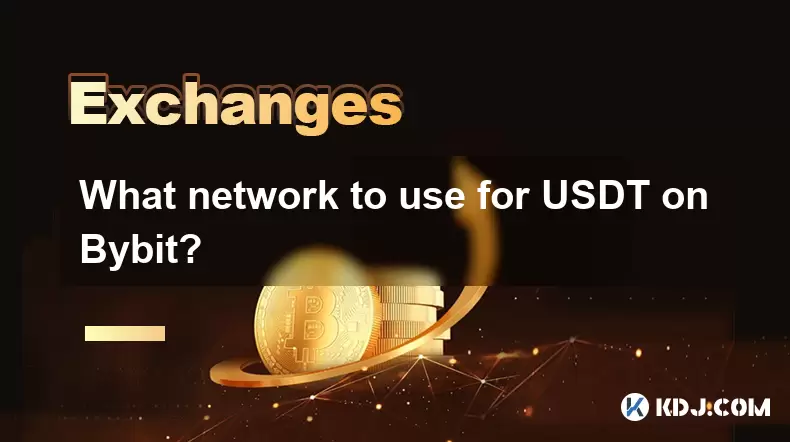
Understanding USDT and Its Network Options
Tether (USDT) is one of the most widely used stablecoins in the cryptocurrency market, offering a 1:1 peg with the US dollar. However, USDT operates on multiple blockchain networks, and choosing the correct one is crucial for ensuring successful deposits and withdrawals. Bybit, a leading cryptocurrency exchange, supports USDT on several networks, including TRC20, ERC20, and OMNI. Each of these networks has its own characteristics, and using the wrong one can result in lost funds.
Supported USDT Networks on Bybit
Bybit allows users to deposit and withdraw USDT via TRC20 (Tron), ERC20 (Ethereum), and OMNI networks. Each network has distinct transaction speeds and fees.
- TRC20 (Tron): Offers faster transactions with lower fees compared to ERC20.
- ERC20 (Ethereum): Provides broader compatibility but may involve higher gas fees and slower confirmations.
- OMNI: The original network for USDT, but it is now largely outdated and rarely used due to slower confirmations and limited support.
It is essential to select the correct network when sending USDT to or from Bybit to avoid irreversible loss of funds.
How to Select the Correct Network on Bybit
When generating a deposit address for USDT on Bybit, users must choose the appropriate network.
- Log in to your Bybit account.
- Navigate to [Wallet] > [Deposit].
- Select USDT from the list of cryptocurrencies.
- You will be presented with a dropdown menu for network selection.
- Choose either TRC20 or ERC20 based on the network from which you are sending the USDT.
If you are transferring from another exchange or wallet, ensure the sending network matches the deposit network selected on Bybit. Mismatching networks may result in irreversible fund loss.
Steps to Withdraw USDT from Bybit
When withdrawing USDT from Bybit, follow these steps to ensure funds arrive safely:
- Go to [Wallet] > [Withdrawal].
- Select USDT and choose the network (TRC20 or ERC20) that your receiving wallet or exchange supports.
- Enter the wallet address carefully.
- Confirm the network fee and transaction fee before proceeding.
- Double-check the address and network before finalizing the transaction.
Using the correct network is critical, especially if you're sending to a wallet or platform that only supports one of the two networks.
Common Mistakes and How to Avoid Them
One of the most frequent errors users make is sending USDT via the OMNI network to Bybit. Since Bybit no longer supports OMNI for USDT deposits, doing so may result in permanent loss of funds.
Another common mistake is using the ERC20 network to send funds to a TRC20-supported wallet, or vice versa. Always verify the supported network of your receiving wallet or exchange before initiating a transaction.
To avoid issues, always copy and paste the deposit address and network directly from Bybit rather than typing manually.
FAQs
Q: Can I use the OMNI network to deposit USDT on Bybit?
A: No, Bybit no longer supports USDT deposits via the OMNI network. Using OMNI may result in permanent fund loss.
Q: What happens if I send USDT using the wrong network?
A: If the network does not match the one selected on Bybit, your funds may be lost permanently. Always confirm the network before sending.
Q: Is TRC20 USDT cheaper to send than ERC20?
A: Yes, TRC20 typically has lower transaction fees and faster confirmation times compared to ERC20.
Q: How do I know which network my USDT is on?
A: Check the transaction details on the sending platform or wallet. Most platforms clearly indicate the blockchain network used for the transaction.
Disclaimer:info@kdj.com
The information provided is not trading advice. kdj.com does not assume any responsibility for any investments made based on the information provided in this article. Cryptocurrencies are highly volatile and it is highly recommended that you invest with caution after thorough research!
If you believe that the content used on this website infringes your copyright, please contact us immediately (info@kdj.com) and we will delete it promptly.
- Freedom Gold Pack: The Legacy Coin Defining 2025
- 2025-07-19 06:30:13
- Trump, the GENIUS Act, and Stablecoin Regulations: A New Era for Crypto?
- 2025-07-19 06:50:12
- Pi Network's Ecosystem Challenge: App Studio Sparks Innovation
- 2025-07-19 06:55:13
- Zebec Network's Bullish Engulfing Pattern: Price Forms and Future Outlook
- 2025-07-19 06:30:13
- XRP, Ripple, Bitcoin, Ethereum: Decoding the Crypto Landscape
- 2025-07-19 05:50:13
- Penny Altcoins Eyeing $1 in Q3 2025: Cardano, BlockchainFX, and the Hunt for Crypto Gold
- 2025-07-19 05:10:13
Related knowledge
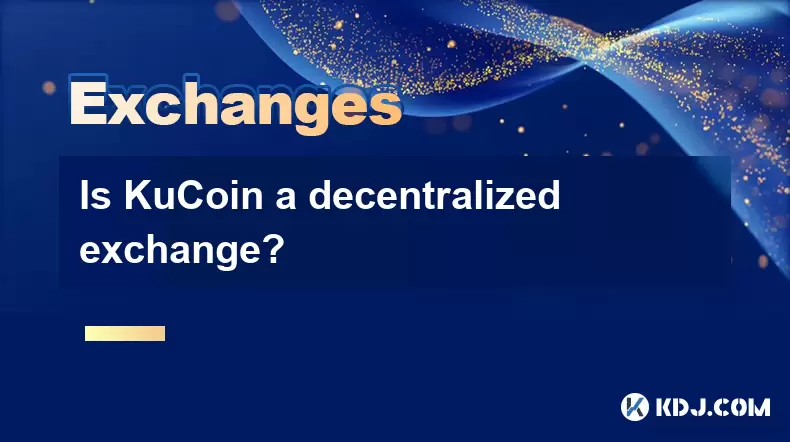
Is KuCoin a decentralized exchange?
Jul 18,2025 at 03:15pm
Understanding Decentralized Exchanges (DEXs)To determine whether KuCoin is a decentralized exchange, it's essential to first understand what defines a...
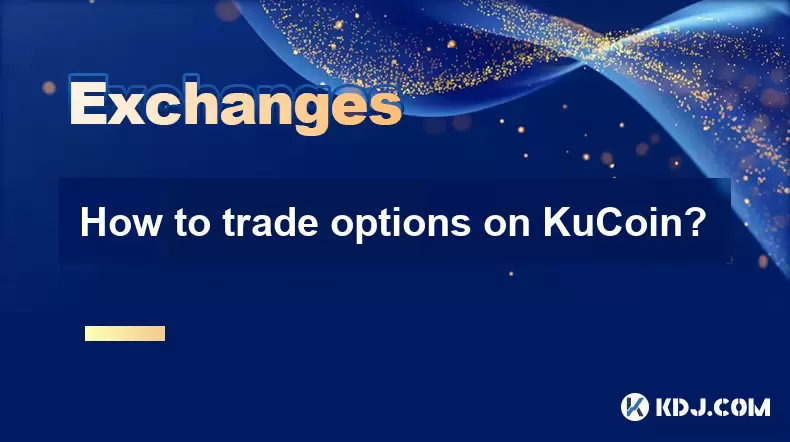
How to trade options on KuCoin?
Jul 19,2025 at 03:42am
Understanding Options Trading on KuCoinOptions trading on KuCoin allows users to speculate on the future price movements of cryptocurrencies without o...
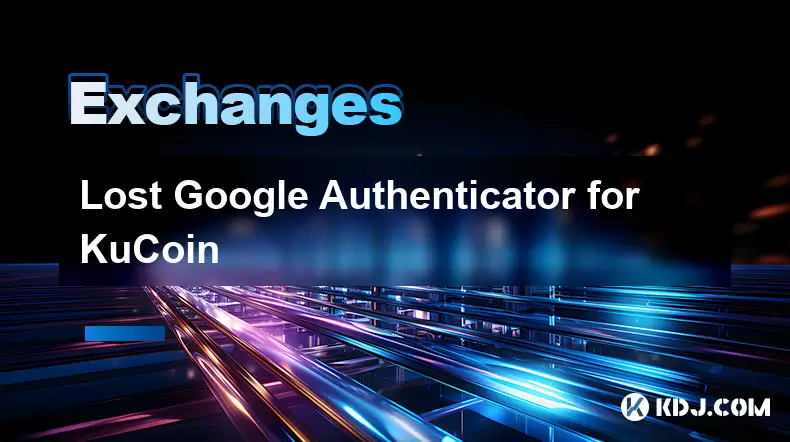
Lost Google Authenticator for KuCoin
Jul 19,2025 at 02:35am
Understanding the Importance of Google Authenticator in KuCoin SecurityGoogle Authenticator is a critical tool used by KuCoin users to enable two-fact...
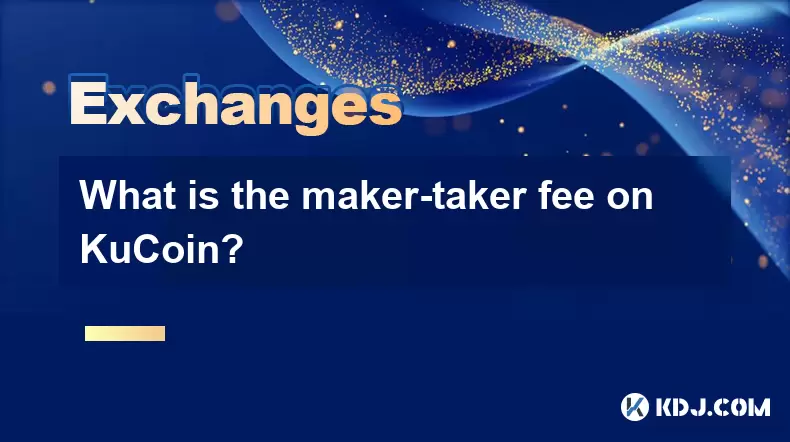
What is the maker-taker fee on KuCoin?
Jul 18,2025 at 12:42pm
Understanding the Maker-Taker Fee ModelThe maker-taker fee model is a pricing structure used by many cryptocurrency exchanges, including KuCoin, to de...
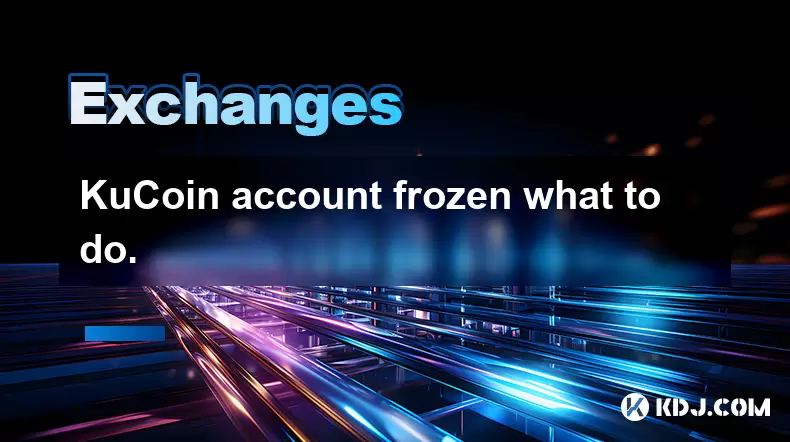
KuCoin account frozen what to do.
Jul 19,2025 at 04:35am
Understanding Why Your KuCoin Account Was FrozenIf you've discovered that your KuCoin account is frozen, the first step is to understand why this has ...
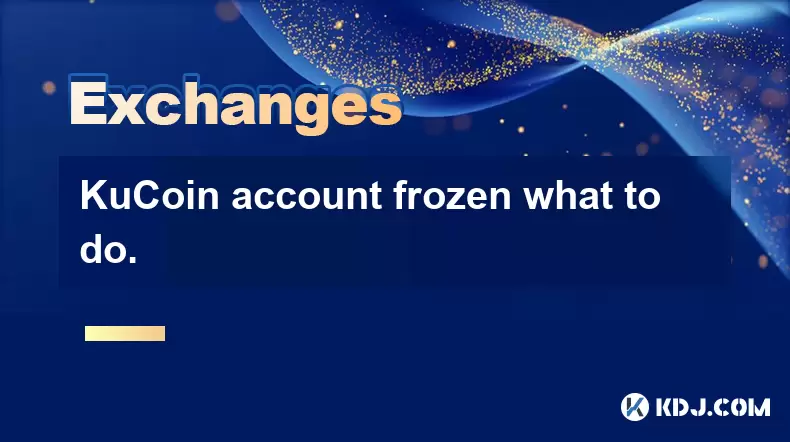
KuCoin account frozen what to do.
Jul 19,2025 at 12:08am
Understanding Why a KuCoin Account Gets FrozenIf your KuCoin account has been frozen, the first step is to understand why this has happened. KuCoin, l...

Is KuCoin a decentralized exchange?
Jul 18,2025 at 03:15pm
Understanding Decentralized Exchanges (DEXs)To determine whether KuCoin is a decentralized exchange, it's essential to first understand what defines a...

How to trade options on KuCoin?
Jul 19,2025 at 03:42am
Understanding Options Trading on KuCoinOptions trading on KuCoin allows users to speculate on the future price movements of cryptocurrencies without o...

Lost Google Authenticator for KuCoin
Jul 19,2025 at 02:35am
Understanding the Importance of Google Authenticator in KuCoin SecurityGoogle Authenticator is a critical tool used by KuCoin users to enable two-fact...

What is the maker-taker fee on KuCoin?
Jul 18,2025 at 12:42pm
Understanding the Maker-Taker Fee ModelThe maker-taker fee model is a pricing structure used by many cryptocurrency exchanges, including KuCoin, to de...

KuCoin account frozen what to do.
Jul 19,2025 at 04:35am
Understanding Why Your KuCoin Account Was FrozenIf you've discovered that your KuCoin account is frozen, the first step is to understand why this has ...

KuCoin account frozen what to do.
Jul 19,2025 at 12:08am
Understanding Why a KuCoin Account Gets FrozenIf your KuCoin account has been frozen, the first step is to understand why this has happened. KuCoin, l...
See all articles

























































































